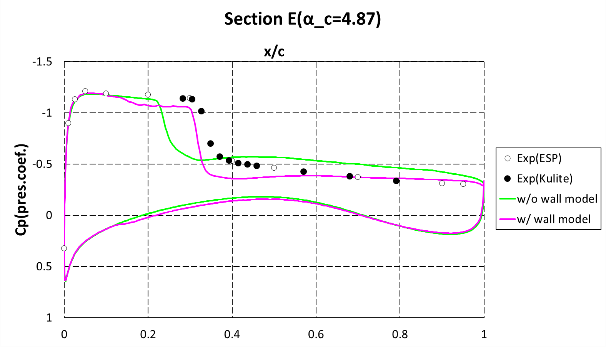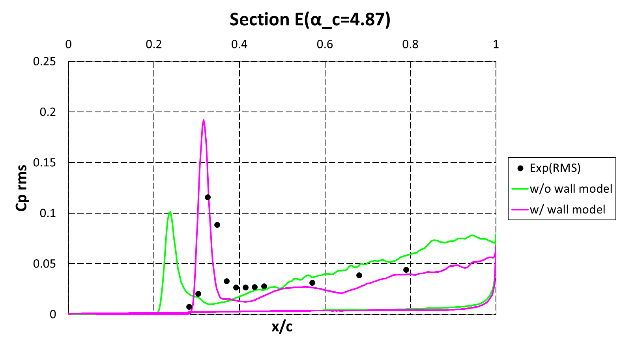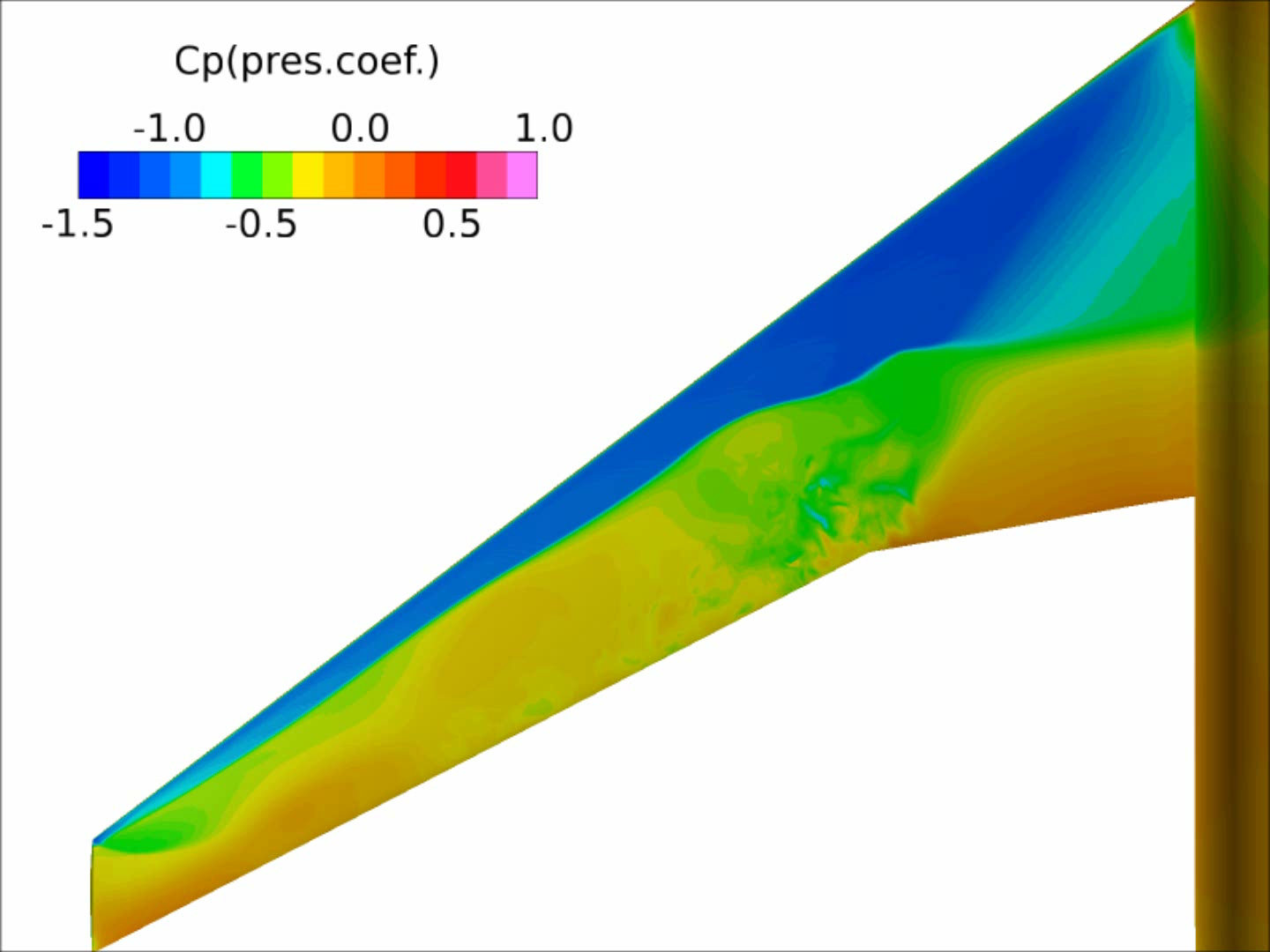Unsteady Aerodynamics Simulation of Frontier Region
JAXA Supercomputer System Annual Report April 2017-March 2018
Report Number: R17EA1901
Subject Category: Aeronautical Technology
- Responsible Representative: Takashi Aoyama, Aeronautical Technology Directorate, Numerical Simulation Research Unit
- Contact Information: Atsushi Hashimoto hashimoto.atsushi@jaxa.jp
- Members: Takashi Ishida, Atsushi Hashimoto, Kenji Hayashi, Takashi Aoyama, Takahiro Yamamoto, Masashi Kanamori
Abstract
The objective of this study is to realize CFD that can be used in the entire flight envelope by investigating precise CFD technologies that can be applied to unsteady phenomena, such as aerodynamic buffeting and flow separation.
Reference URL
Please refer to ‘Unsteady CFD technologies for the entire flight envelope | Numerical simulation technology | Aeronautical Technology Directorate‘.
Reasons for using JSS2
Unsteady simulation is more than 1000 times cost compared with steady simulation. We need a supercomputer within a reasonable time.
Achievements of the Year
We computed a transonic buffet on NASA-CRM wing-body configuration. We used the Zonal-DES method and the wall model for the RANS region. We could reduce the number of grid by one-third. The Mach number is 0.85, the Reynolds number is 1.5×106, and the attack angle is 4.87deg. The grid was generated with BOXFUN and the number of grid is 21M cells. The average and RMS of pressure are shown in (Fig.1) and (Fig.2). The results with the wall model is close to the experimet. The instantaneous surface pressure is shown in (Fig.3). The buffet cells convects in the spanwise direction.
Publications
■ Presentations
1)Atsushi Hashimoto, Takashi Ishida, Takashi Aoyama, Yuya Ohmichi, Takahiro Yamamoto, and Kenji Hayashi. “Current Progress in Unsteady Transonic Buffet Simulation with Unstructured Grid CFD Code”, 2018 AIAA Aerospace Sciences Meeting, AIAA SciTech Forum, (AIAA 2018-0788)
Usage of JSS2
Computational Information
- Process Parallelization Methods: MPI
- Thread Parallelization Methods: N/A
- Number of Processes: 512 – 2024
- Elapsed Time per Case: 15.00 hours
Resources Used
Fraction of Usage in Total Resources*1(%): 2.35
Details
Please refer to System Configuration of JSS2 for the system configuration and major specifications of JSS2.
| System Name | Amount of Core Time(core x hours) | Fraction of Usage*2(%) |
|---|---|---|
| SORA-MA | 19,589,093.12 | 2.60 |
| SORA-PP | 41,299.17 | 0.52 |
| SORA-LM | 1,028.15 | 0.01 |
| SORA-TPP | 0.00 | 0.00 |
| File System Name | Storage Assigned(GiB) | Fraction of Usage*2(%) |
|---|---|---|
| /home | 194.41 | 0.13 |
| /data | 16,592.12 | 0.31 |
| /ltmp | 2,087.98 | 0.16 |
| Archiver Name | Storage Used(TiB) | Fraction of Usage*2(%) |
|---|---|---|
| J-SPACE | 2.26 | 0.10 |
*1: Fraction of Usage in Total Resources: Weighted average of three resource types (Computing, File System, and Archiver).
*2: Fraction of Usage:Percentage of usage relative to each resource used in one year.
JAXA Supercomputer System Annual Report April 2017-March 2018





